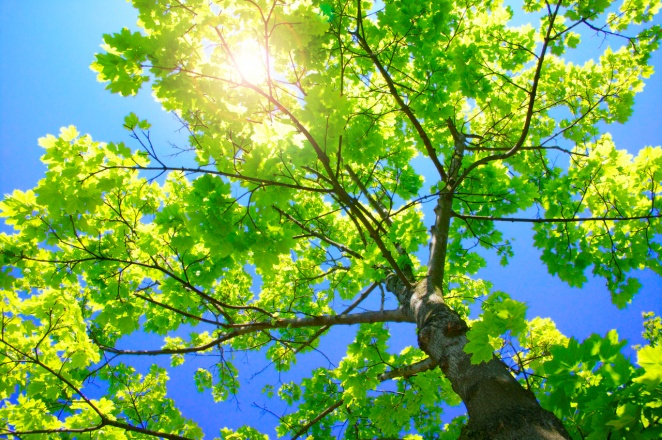Item RG031003: The reactants of photosynthesis have less chemical energy than the products because energy from the sun is converted to chemical energy during photosynthesis.
A chemical reaction called photosynthesis occurs in a tree as the sun shines on its leaves. During this reaction, water and carbon dioxide (the reactants) react to form sugars and oxygen (the products).

How does the chemical energy of the reactants (water and carbon dioxide) compare to the chemical energy of the products (sugars and oxygen)?
- The reactants have more chemical energy than the products because energy is always given off during chemical reactions.
- The reactants have less chemical energy than the products because energy is created when sugars are made during photosynthesis.
- The reactants have less chemical energy than the products because energy from the sun is converted to chemical energy during photosynthesis.
- The reactants have the same amount of chemical energy as the products because the amount of energy given off during photosynthesis is balanced by the amount of energy from the sun that is converted to chemical energy.
- Distribution of Responses

- Scale Score for Item Difficulty
(200[Easy]-800[Difficult]) - 542
- Students Responding Correctly
| Group | Correct | Total | Percent |
|---|---|---|---|
| Overall | 886 | 3948 | 22% |
| Grades | |||
| 4–5 | 110 | 472 | 23% |
| 6–8 | 404 | 1809 | 22% |
| 9–12 | 372 | 1667 | 22% |
| Gender | |||
| Male | 400 | 1748 | 23% |
| Female | 456 | 2080 | 22% |
| Primary Language | |||
| English | 792 | 3543 | 22% |
| Other | 63 | 270 | 23% |
- Disciplinary Core Ideas
- PS1.B Some chemical reactions release energy, others store energy.
PS3.D The chemical reaction by which plants produce complex food molecules (sugars) requires an energy input (i.e., from sunlight) to occur. In this reaction, carbon dioxide and water combine to form carbon-based organic molecules and release oxygen.

